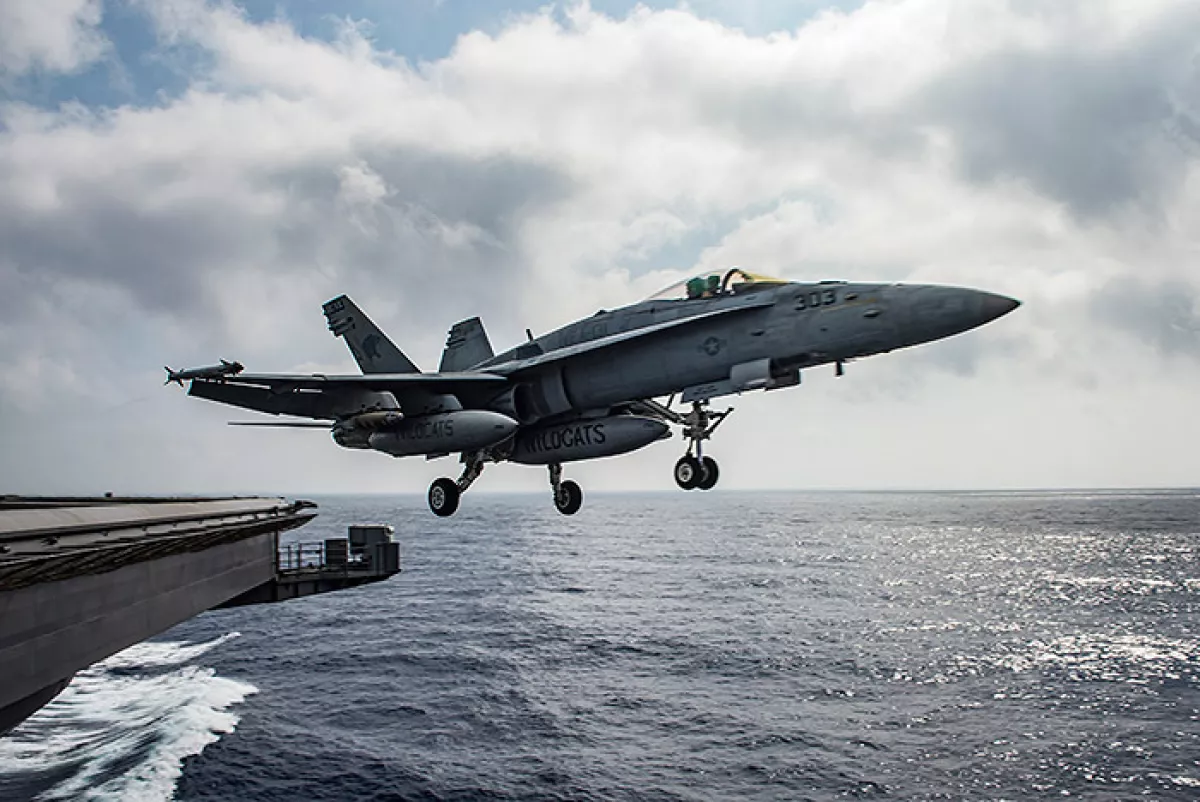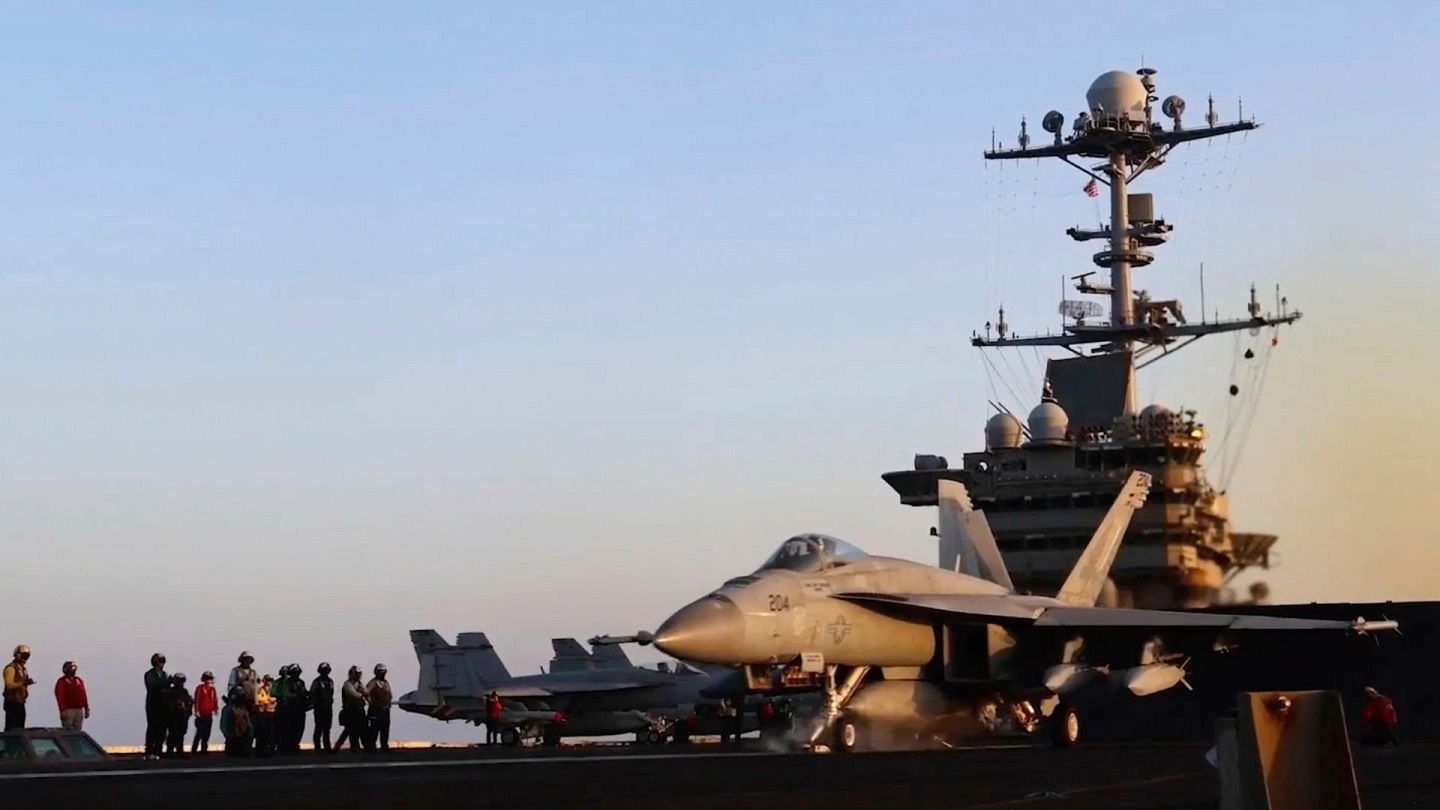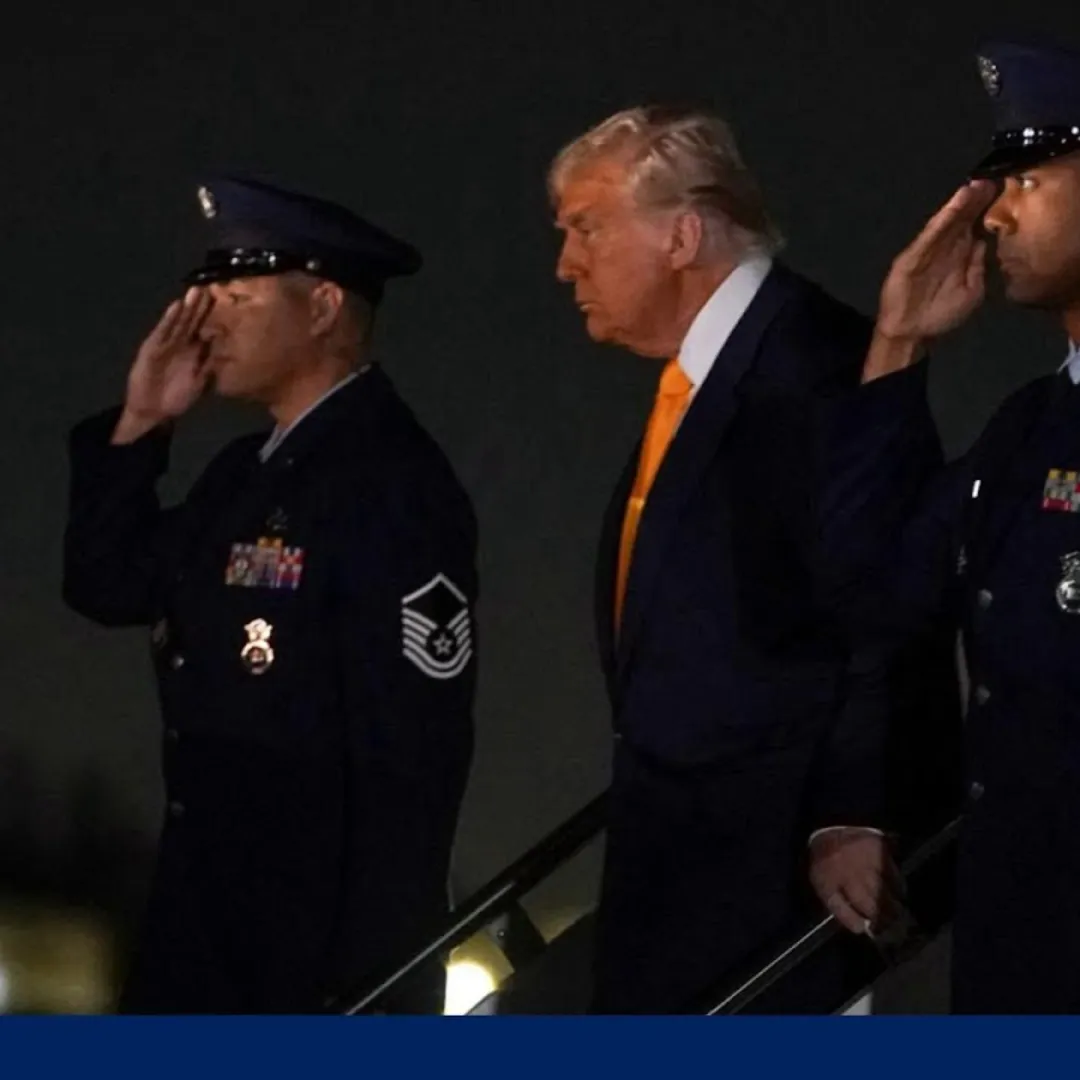A $60 million U.S. Navy fighter jet plunged into the Red Sea on Monday in what has become the latest embarrassment for Defense Secretary Pete Hegseth.
The loss of the aircraft, a F/A-18 Super Hornet, adds to the growing scrutiny surrounding Hegseth’s leadership as mounting operational and internal challenges plague the Department of Defense under his watch.
The jet reportedly went overboard from the USS Harry S. Truman, a Nimitz-class aircraft carrier currently deployed in the Red Sea as part of the ongoing U.S. military operation in response to attacks by Houthi rebels in Yemen.
The Iranian-backed militant group has intensified attacks on international shipping routes in recent weeks, citing Israel’s military campaign in Gaza and the continued aid blockade as justification for their strikes.
On Monday, the Houthis claimed responsibility for launching both a missile and a drone targeting the USS Truman. According to a U.S. defense official, the aircraft carrier was forced to make a hard evasive maneuver in response to the threat.
While the carrier successfully avoided a direct hit, the sharp turn played a direct role in the Super Hornet being lost at sea.
"The F/A-18E was actively under tow in the hangar bay when the move crew lost control of the aircraft. The aircraft and tow tractor were lost overboard," a statement from the U.S.
Navy confirmed. "Sailors towing the aircraft took immediate action to move clear of the aircraft before it fell overboard. An investigation is underway."

The incident caused minor injuries to one sailor, who has since been treated and released. While no fatalities occurred, the loss of one of the Navy’s most advanced multirole fighter jets has raised serious concerns about operational readiness, safety protocols, and command responsibility aboard U.S. vessels in active zones.
At the center of the political fallout is Defense Secretary Pete Hegseth, a former television personality and longtime Trump ally whose controversial tenure at the Pentagon has been marked by mounting internal dissent, administrative instability, and what critics describe as a chaotic approach to military leadership.
President Trump has continued to publicly back Hegseth despite the setbacks. However, reports have emerged that the White House has quietly begun evaluating potential replacements. That revelation comes as multiple investigations and scandals begin to coalesce around the embattled defense secretary.
Among the most damaging is the so-called Signalgate controversy, which involves allegations that Hegseth created and participated in encrypted group chats that discussed classified military operations, including a U.S. airstrike in Yemen earlier this year.
The group chats reportedly included senior defense officials and close associates, some without proper security clearance, raising concerns about breaches of protocol and national security.
Trump and Hegseth have previously touted the success of U.S. strikes in Yemen as part of a broader campaign to degrade Houthi missile and drone capabilities.
The Pentagon has released few details about those operations, but internal documents have indicated that some of the attacks were carried out under what critics have described as vague or insufficiently justified rules of engagement.
"The Secretary and the President have pointed to these strikes as proof of American resolve," one Pentagon official said on condition of anonymity. "But when something like this happens, it exposes how brittle things really are beneath the surface."

Adding to the controversy is the internal state of the Department of Defense under Hegseth’s leadership. Sources within the Pentagon describe a department increasingly consumed by infighting and paranoia.
A significant portion of senior staff time is reportedly dedicated to tracking down potential leakers, a focus that critics argue is undermining operational efficiency and morale.
"The Secretary and his inner circle are obsessed with leaks," said one former DoD official. "They’re turning the place upside down, wasting time and energy on witch hunts instead of focusing on the actual job of running the military."
The Pentagon has recently seen a wave of departures, many of which have not been related to the budget cuts or layoffs that Hegseth previously announced. Several career officials and high-ranking officers have quietly left their posts, citing a toxic work environment and a lack of strategic direction.
In private conversations, some defense leaders have expressed concern that Hegseth is overwhelmed by the responsibilities of his office. These concerns have only grown louder in the aftermath of the jet incident in the Red Sea, which some see as symptomatic of larger problems with military discipline and preparedness under the current leadership.
"This was preventable," said a retired Navy admiral familiar with carrier operations. "These jets are among our most valuable assets, and the procedures for moving them on a ship are well-established. If one went overboard, it means something went wrong in a serious way."
Compounding the optics problem is the political context. Hegseth has long positioned himself as a hardliner, vocally supporting expanded military budgets, aggressive foreign policy postures, and combative rhetoric toward adversaries. His critics argue that this bravado masks a lack of administrative competence and strategic depth.
Even some Republican lawmakers who initially supported Hegseth’s appointment are beginning to express unease, especially as the situation in Yemen continues to draw the U.S. deeper into a complex and unstable regional conflict.

Questions are also mounting about whether the Houthi threat is being effectively contained or if the U.S. is being dragged into a protracted engagement with unclear objectives.
In Congress, oversight committees are quietly requesting briefings on both the jet incident and the broader conduct of U.S. operations in the Red Sea. One congressional aide indicated that members on both sides of the aisle are increasingly concerned about the lack of transparency and accountability at the Pentagon.
"There’s a sense that the Department is spinning out of control," the aide said. "Members are starting to ask whether the Secretary is really the right person for this job."
As pressure builds, Hegseth has maintained a defiant public posture. In recent speeches and interviews, he has defended his record, pointing to the rapid response capabilities demonstrated by the Navy in avoiding a missile strike on the Truman.
He has also repeated his assertion that morale is high among troops and that the department is undergoing a necessary restructuring to root out inefficiency and bureaucratic inertia.
But those claims are difficult to square with the reported chaos inside the Pentagon and the growing list of high-profile mishaps. The jet lost this week is not just a financial loss or a tactical embarrassment—it is a visible symbol of what many now describe as a department in crisis.
The next few weeks will be critical for Hegseth. The investigation into the jet incident is expected to yield more details, and lawmakers are likely to demand greater transparency regarding operations in the Red Sea. Meanwhile, internal discontent continues to simmer, and additional personnel changes may further destabilize the department.
For a defense secretary already under fire for controversial management and embattled decision-making, this latest setback could mark a turning point. Whether Hegseth can weather the storm or is ultimately forced to step aside remains to be seen. But with every new scandal and operational blunder, the calls for change grow louder—even among those who once considered themselves allies.





